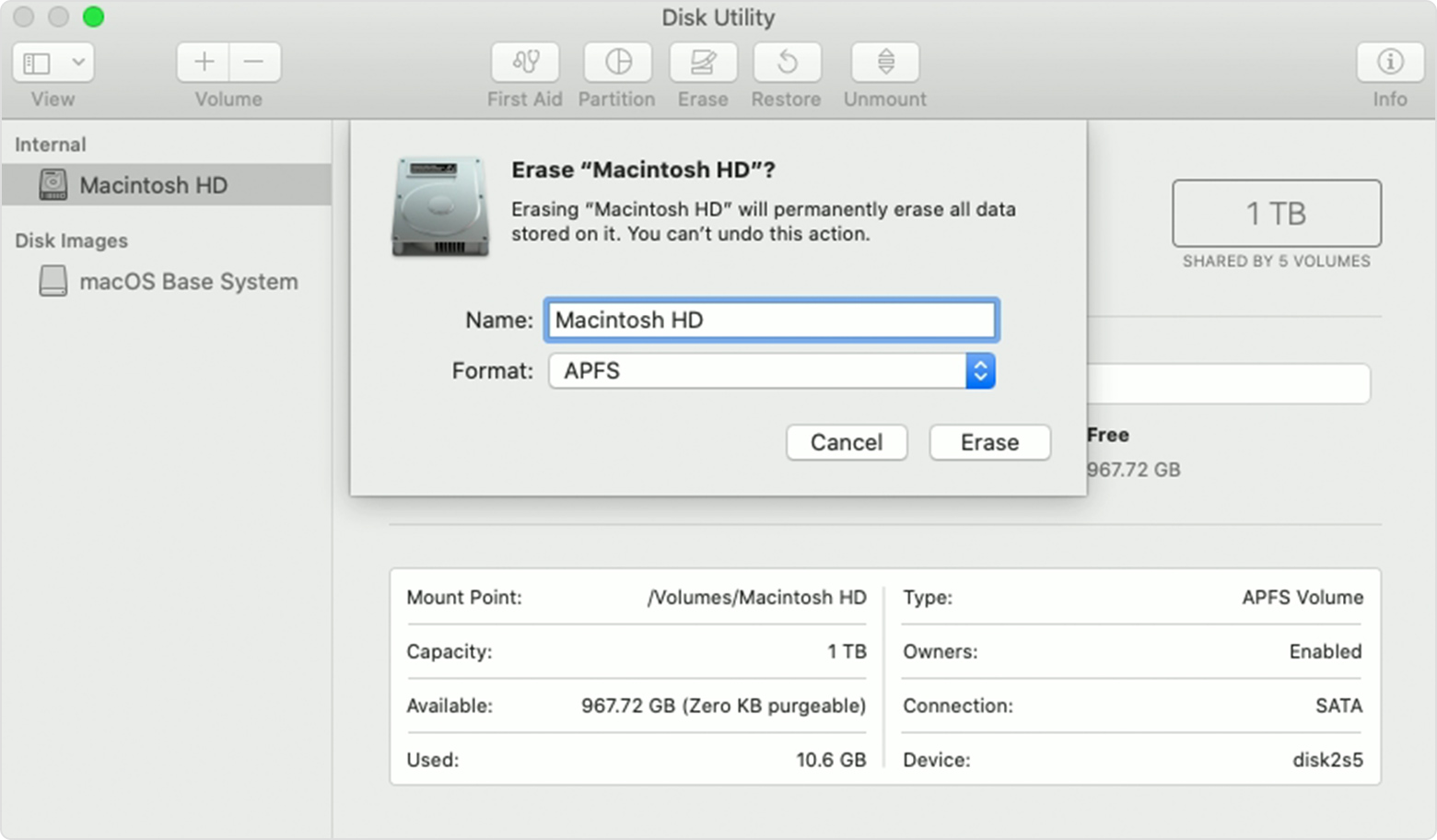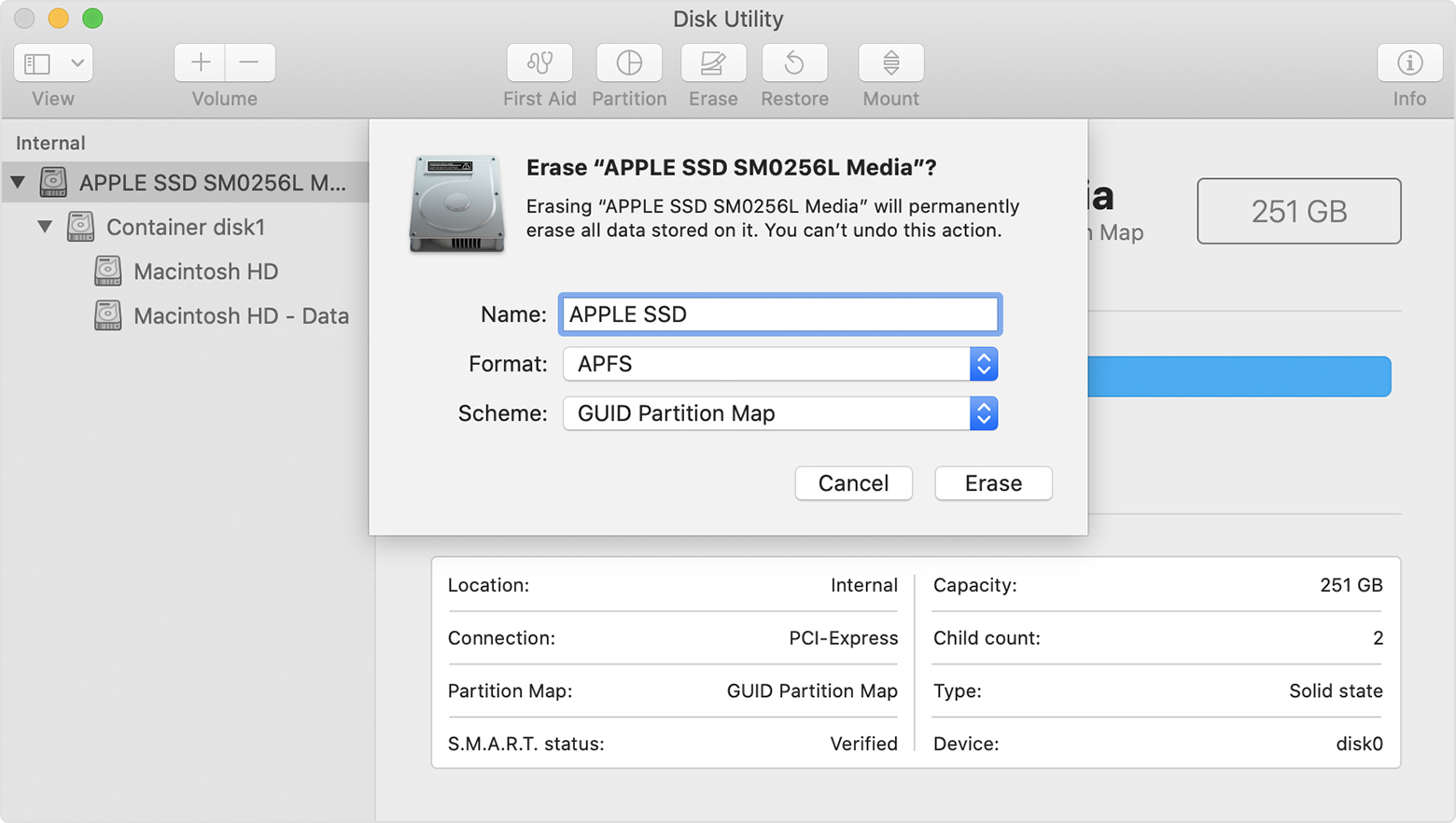
I cannot tell from the output which partition layout is being utilized. The only concern is regarding the USB stick. The EFI/ESP partition is on the internal drive which is required. Volume Read-Only: Not applicable (not mounted)
DISK UTILITY APPLE FREE
Volume Free Space: 0 B (0 Bytes) (exactly 0 512-Byte-Units) Volume Total Space: 0 B (0 Bytes) (exactly 0 512-Byte-Units) I am seeing a EFI/ESP partition on the SSD. Allocation sizes that are being utilized are bold. I believe the "newfs_msdos" command allows selecting more of the FAT options, but I have no clue what to suggest as I have always just used the OS defaults regardless of the OS.Īlso check to see if macOS added the hidden EFI/ESP partition which will cause problems with other devices.

You may want to see if you can tell what block sizes or file allocation sizes are being utilized.
DISK UTILITY APPLE MAC OS
I concluded that is a bug and that is nothing to do about it in this version of MAC os (12.3.1) Now, like I was saying in the first post, the ms-dos fat option, although apparently available, leads to the same ms-dos fat 32 format. When I used MAC os Mojave (2 weeks ago) I was able to use disk utility to format in ms-dos fat (period, not 16, not 32/ exactly like you see in the upper photo ). my car's device played all the media files from the stick.
DISK UTILITY APPLE PC
Another old stick (8 GB) written in a PC was ok. Another stick (32GB) format FAT32, written by my MAC os 12 displays the same error in my car's device. I was able to format my USB stick (2GB) in FAT 16, but it still doesn't work with my car's device (error: no file). I have not personally tested these commands to verify I have them 100% correct, but should work as written as long as you replace "diskX" with the correct drive ID. It is extremely easy to make a catastrophic mistake since there are no safety nets like the macOS GUI provides. Here is the post I found which provided this information (except for the last option):Īlways be careful when using the command line within the Terminal. diskutil partitionDisk diskX 1 MBR "MS-DOS FAT16" "MYDRIVE" R If the above commands don't give you the partition type you need, then you can use the following command which allows you to select the partition type (I'm going to show it with the MBR partition type, but it can easily be modified to GUID by replacing "MBR" with "GPT"). Most likely you will need the MBR partition type. I also don't know which partition type you actually need for your device. I do not know what type of partition table these commands will make, but most likely it will be GUID.
DISK UTILITY APPLE PASSWORD
As you type the password nothing will show on the screen so you will need to press the "Return" key to submit the password.ĭiskutil eraseDisk "MS-DOS FAT16" "MYDRIVE" diskX This will prompt you for your admin password. sudo newfs_msdos -F 16 -v "MYDRIVE" /dev/diskX Make sure to replace "MYDRIVE" with the name you want for the drive (use all caps within the double-quotes, maximum eleven characters). I've never personally used the first option, but only found it when searching just now. I'm presenting both options here since I'm not sure if Monterey may have changed something. Now there may be two ways to format the drive.

Make sure to replace "diskX" in all of these commands with the correct drive ID for your drive (always verify the drive ID immediately before using the command because it may change each time you mount the drive). Make sure you have the correct drive ID or you will destroy all data on the wrong drive. Once you have the drive ID, then you will need to unmount all volumes on the drive you want to erase. You will need to the drive identifier which you can get from Disk Utility (it is in the format of "diskX").


You may be able to select FAT16 if you want to use the command line to format the drive. If the drive is too small for FAT32, then I believe macOS may format it as FAT16 (or at least it used to do so). In your screenshot only "FAT" and "exFAT" are shown.


 0 kommentar(er)
0 kommentar(er)
